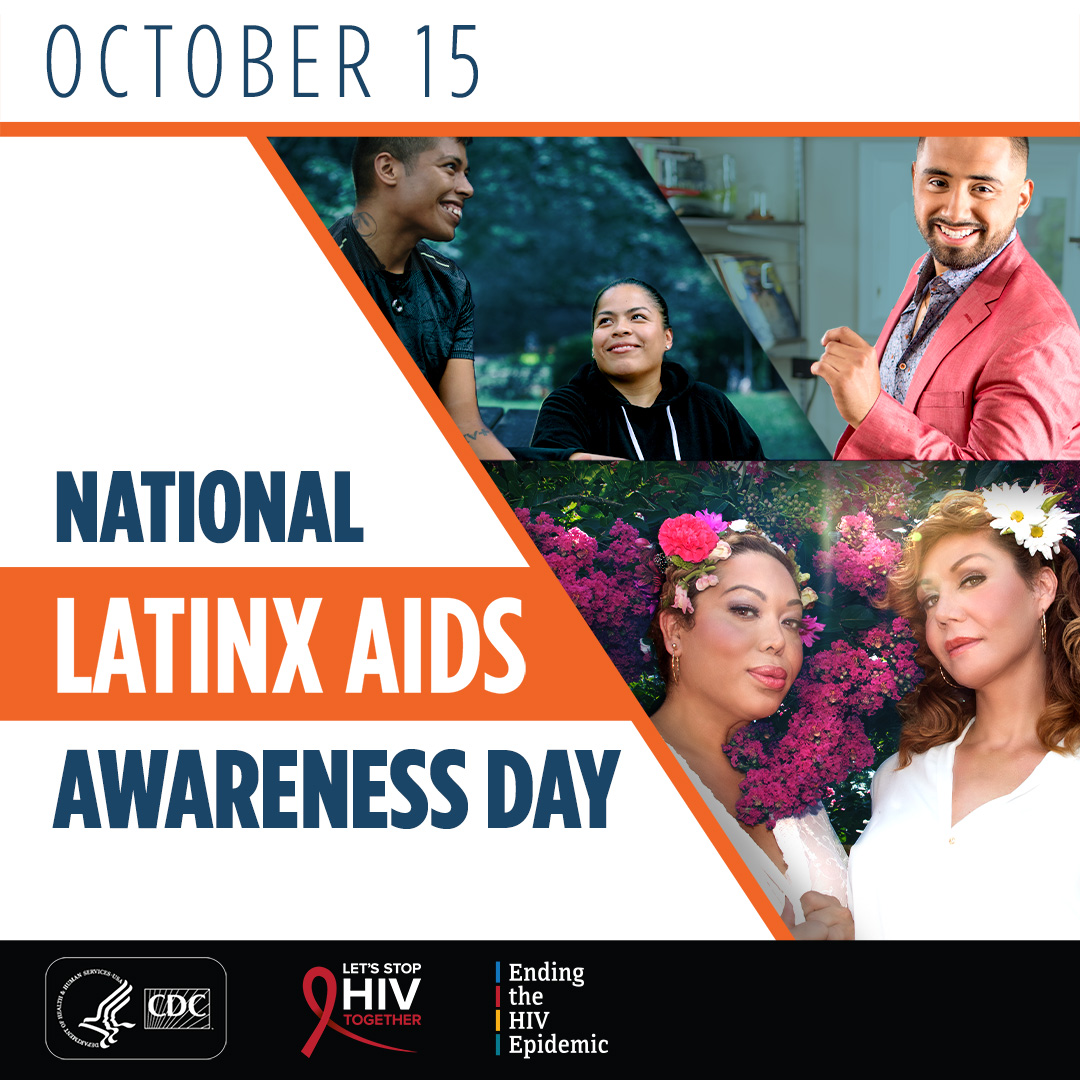NLAAD 2020: We’re in This Together
Topics

Cross-posted from Centers for Disease Control and Prevention
October 14, 2020
Dear Colleague:
October 15 is National Latinx AIDS Awareness Day (NLAAD), a time to increase awareness of the impact of HIV on Latinx in the United States. In 2018, Hispanics/Latinos accounted for 28% of the estimated 36,400 new HIV infections in the United States and 78% of new infections among Hispanics/Latinos were among gay, bisexual, and other men who have sex with men (MSM). Estimated incidence of HIV among Hispanics/Latinos in 2018 was 4 times that of non-Hispanic whites.
In a recently published article in Morbidity and Mortality Weekly Report, researchers from CDC used data from the Medical Monitoring Project (MMP) collected during 2015–2019 to examine ART adherence and reasons for missing ART doses among HIV-positive Hispanic/Latino MSM. Results showed 77% of all Hispanic/Latino MSM interviewed across the four annual survey cycles had high adherence in the month before their interview. Younger people and individuals at or below the federal poverty threshold were less likely to have reported high ART adherence. Reported ART adherence was also lower among persons who reported recent drug use, depression, and unmet needs for services.
Barriers to ART adherence among Hispanic/Latino MSM have been explored in limited contexts, and nationally representative analyses are lacking. However, limited health care access, housing instability, poverty, and systemic racismExit Disclaimer commonly act as barriersExit Disclaimer to care for Hispanics/Latinos in the United States. Additionally, healthcare providers’ implicit racial/ethnic biasesExit Disclaimer (thoughts and feelings that providers are not consciously aware of) toward Hispanics/Latinos may discourage treatment adherence, which reduces the likelihood of viral suppression. Interventions that address the social determinants of health may reduce barriers to ART adherence among Hispanic/Latino MSM with HIV and help to eliminate racial/ethnic disparities in HIV infection among Hispanics/Latinos.
As part of the Ending the HIV Epidemic (EHE) initiative that aims to reduce HIV infection in the United States by 90% by 2030, CDC’s Let’s Stop HIV Together (Detengamos Juntos el VIH) campaign aims to empower communities, partners on the ground, and healthcare providers to reduce HIV stigma (estigma) among all Americans, prevent HIV (prevención) among the hardest-hit populations, such as Hispanic/Latino MSM, and help people with HIV (tratamiento) stay healthy. CDC’s Spanish campaign resources are created in Spanish or transcreated (tailored and recreated) to meet the cultural needs of Hispanics/Latinos. We encourage partners to visit the campaign website and download and share campaign materials. We also encourage you to view CDC’s fact sheets on HIV and Hispanics/Latinos and HIV and Gay and Bisexual Men.
HIV continues to be a serious threat to the health of Hispanic/Latino communities. We can work together to improve HIV testing (including self-testing), increase PrEP use, increase ART adherence, and eliminate racial/ethnic disparities to improve health outcomes and ensure health equity.
Thank you for your hard work and continued commitment; we wish you good health and ongoing support in these challenging times.
Sincerely,
/Irene Hall/
H. Irene Hall, PhD
Acting Director
Division of HIV/AIDS Prevention
National Center for HIV/AIDS, Viral Hepatitis, STD, and TB Prevention
Centers for Disease Control and Prevention
www.cdc.gov/hiv
/Jonathan Mermin/
Jonathan H. Mermin, MD, MPH
Rear Admiral and Assistant Surgeon General, USPHS
Director
National Center for HIV/AIDS, Viral Hepatitis, STD, and TB Prevention
Centers for Disease Control and Prevention